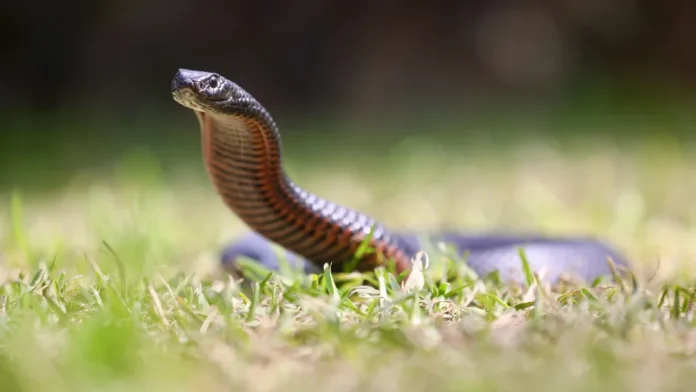Snake Season Starts Early as Unusually High Temperatures Hit Australia
In recent times, Australia has been experiencing an unprecedented rise in temperatures, leading to an early start of snake season. The impact of these soaring temperatures on the behavior of snakes has caught the attention of both researchers and the general public alike. As a result, we at [Fresh News] have delved into this intriguing phenomenon to provide you with a comprehensive understanding of the situation.
Unraveling the Connection between Temperature and Snake Activity
As temperatures soar across the Australian continent, the behavior of snakes is undergoing a fascinating transformation. Snakes are ectothermic creatures, meaning their body temperature is regulated by the environment. With the onset of warmer weather, these reptiles become more active as their metabolism accelerates. This leads to an earlier emergence from their winter hideouts and a surge in snake sightings.
The Implications for Snake Season
The premature arrival of snake season brings about various implications for both humans and ecosystems. Increased snake activity means a higher likelihood of encounters, posing potential risks to individuals who may inadvertently come into contact with these creatures. It is of utmost importance to exercise caution when exploring outdoor areas, especially those with known snake populations.
Moreover, the ecosystem itself experiences a ripple effect due to the altered snake behavior. Snakes play a crucial role in maintaining ecological balance by controlling rodent populations, thus preventing outbreaks of disease and preserving the delicate harmony of the ecosystem.
Snake Species Affected
Various snake species are responding differently to the changing temperatures. While some are adjusting their activity patterns, others are adapting their habitats or migration routes. The Tiger Snake (Notechis spp.), for instance, is known to be highly sensitive to temperature fluctuations, and its early emergence could have cascading effects on the food chain.
Similarly, the Eastern Brown Snake (Pseudonaja textilis), one of the most venomous snakes in the world, may also alter its behavior in response to rising temperatures. This shift in activity patterns could potentially impact human encounters and snakebite incidents.
Mitigation Strategies and Precautions
As snake season commences earlier than usual, it is imperative for individuals and communities to be well-prepared. Here are some essential measures to consider:
1. Education and Awareness
Understanding snake behavior and habitat preferences is key to avoiding encounters. Educating yourself and your family about local snake species, their habitats, and how to react in case of an encounter can significantly reduce the risk of snakebite incidents.
2. Habitat Modification
Make your property less attractive to snakes by reducing potential hiding spots. Keep lawns well-maintained, remove debris, and seal any gaps or crevices that could serve as hiding places for snakes.
3. Professional Assistance
If you suspect a snake has taken up residence on your property, it is recommended to seek professional help for its safe removal. Attempting to handle snakes without the proper knowledge and equipment can lead to dangerous situations.
4. First Aid Preparedness
In the unfortunate event of a snakebite, knowing how to administer proper first aid is crucial. Keep a snakebite kit on hand and ensure that all family members are aware of its location and contents.
Conclusion
In conclusion, the early onset of snake season in Australia due to unusually high temperatures is a phenomenon that warrants attention and preparation. As temperatures continue to rise, snake behavior is likely to remain in flux, prompting the need for proactive measures to ensure the safety of both humans and the ecosystem. By staying informed, taking necessary precautions, and fostering a greater understanding of these remarkable reptiles, we can coexist harmoniously with the diverse wildlife that surrounds us.








[…] Snake season starts early as unusually high temperatures hit Australia […]